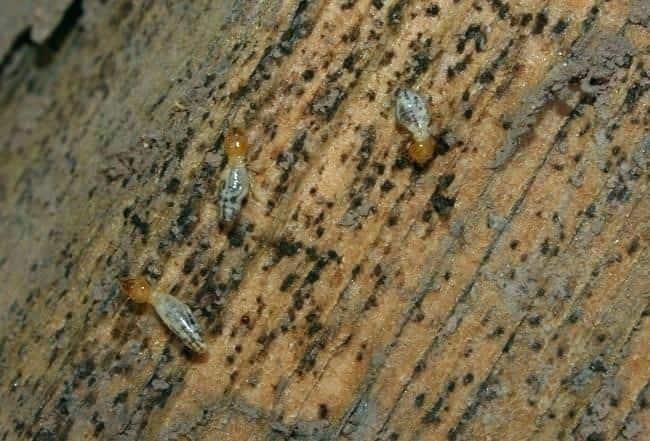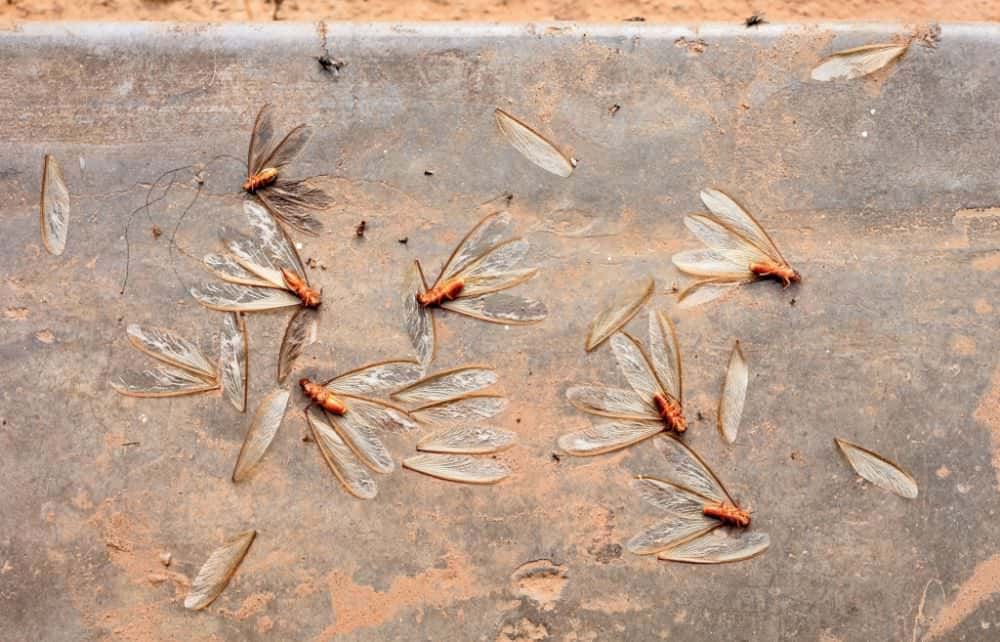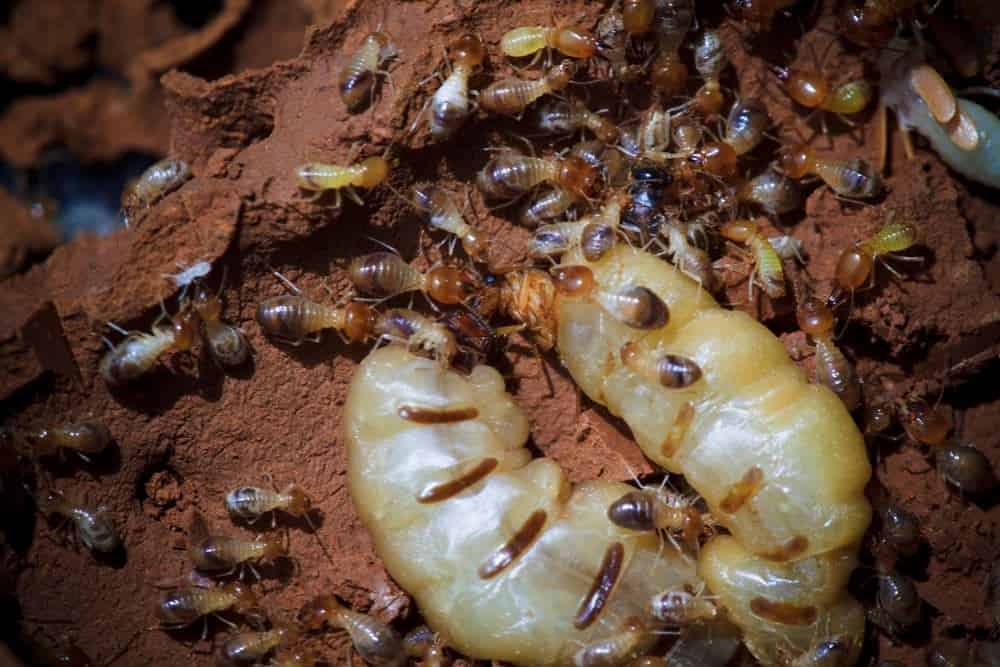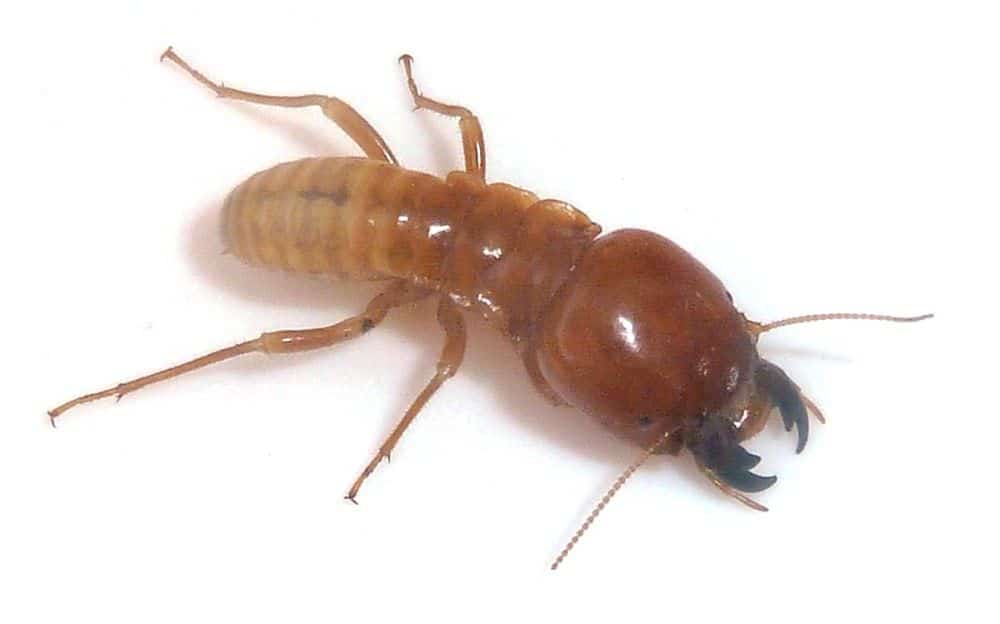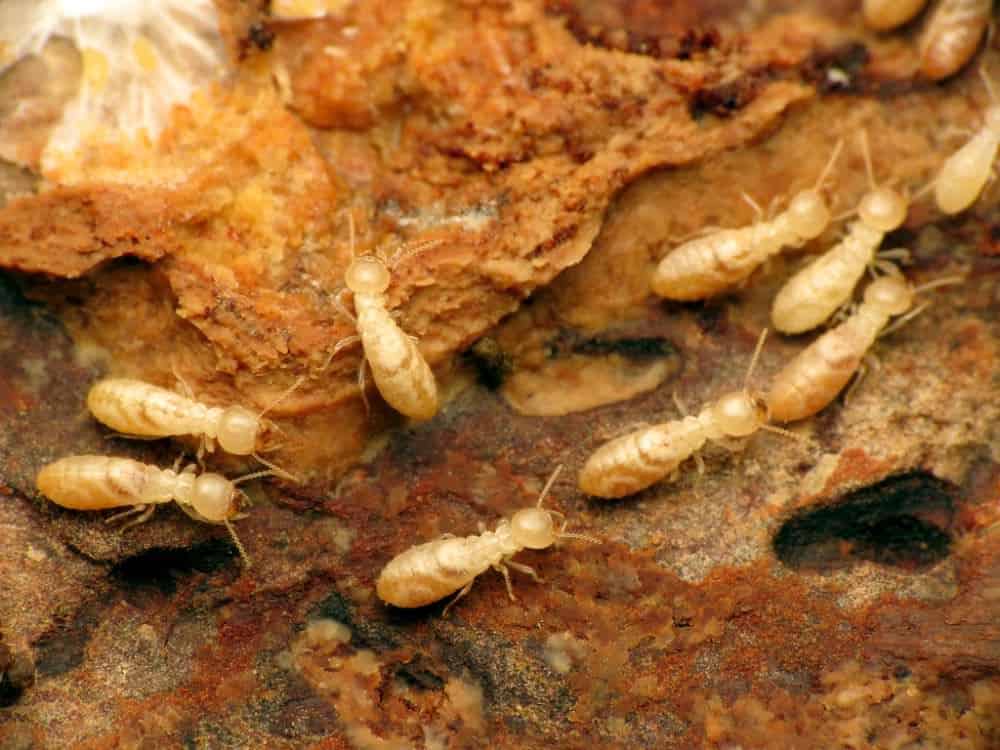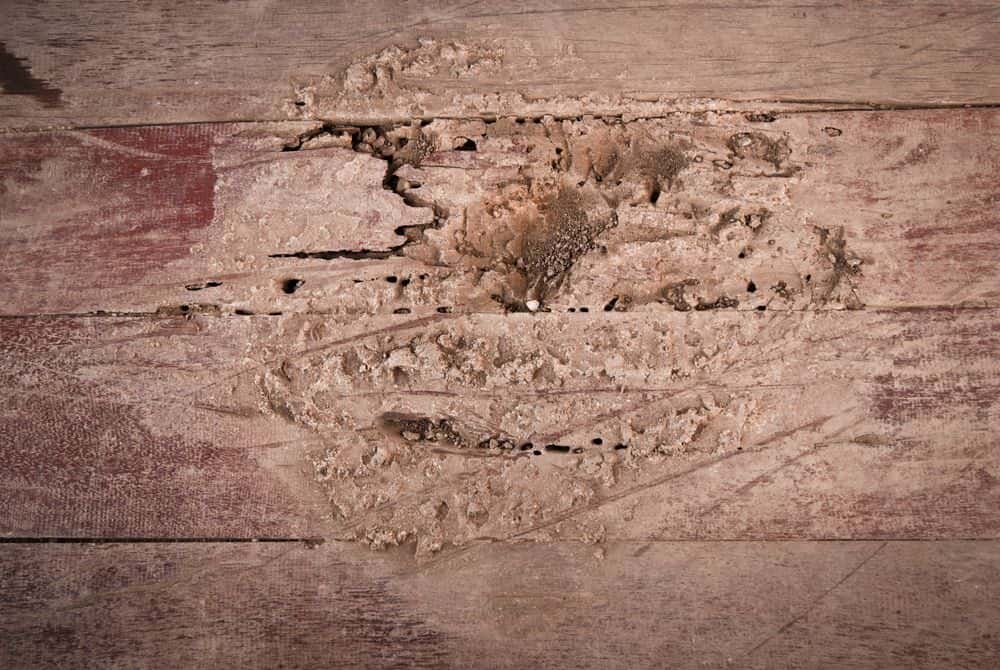Termite Frass
Finding termite poop is usually a clear indication that these destructive pests are in the vicinity. In this article, you will discover how to identify termite droppings and where you are likely to find them.
I will also detail if finding termite feces indicates a possible infestation. Finally, you will learn how to clean up termite poop so let’s get down to business.
What Does Termite Frass Look Like?
Frass is a term that is used to describe insect feces in general. Termite poop can also be referred to as pellets.
The frass can differ in appearance, depending on the species. The three categories of termites you will find include dampwood, drywood, and subterranean.
Dampwood Termites
Dampwood termites prefer to inhabit and eat wood that is decaying or moist. These termites must live in humid environments or they risk a swift death. Any damp, wooden structures are at risk of dampwood termites. Examples include wood that is exposed to rain, or the wooden structure of a leaky roof that isn’t maintained.
The fecal pellets produced by these termites are hexagonal in shape, which means they have six sides. When the termite first excretes a pellet, it is hard. This frass is usually a medium-light brown color.

Due to the moisture in the environment, the droppings do not hold this shape. Instead, pellets clump together, resembling a gluey paste. The more humid the termites’ nest, the less distinguishable the frass will be.
If the nest is dryer, pellets may collect below or outside the infested structure. In this scenario, they will keep their hexagonal shape and hard consistency.
Drywood Termites
Drywood termites inhabit dry wood and, unlike other species of termites, they can survive without readily available water sources. A wooden structure does not need to be damaged, decaying or otherwise faulty to have drywood termites. These termites, however, are invasive and highly destructive.
The feces of drywood termites are similar to that of dampwood termites—they excrete hard, hexagonal pellets. As they live in dry habitats, drywood termite frass retains its distinctive shape and the pellets can range in color from tan to dark brown.
The color of the feces is not influenced by the type of wood the termites are consuming. Drywood termite feces typically accumulates in piles and each pellet is slightly larger than a grain of sand. Pest control professionals can identify drywood termites by examining their frass.
The droppings have a distinctive, gritty, rough texture to them. The dryness of the frass is due to the biology of the termites. The drywoods have three separate pairs of anal glands and these glands extract all moisture from the feces prior to excretion. This is necessary, since drywood termites do not have free access to water in their nests.
Subterranean Termites
Like dampwood termites, subterranean termites require a moist habitat and their nests are usually built below ground, in the soil. These termites forage away from the nests, in wooden structures, to feed. The worker termites construct tubes that allow them to enter their target structure from the ground.
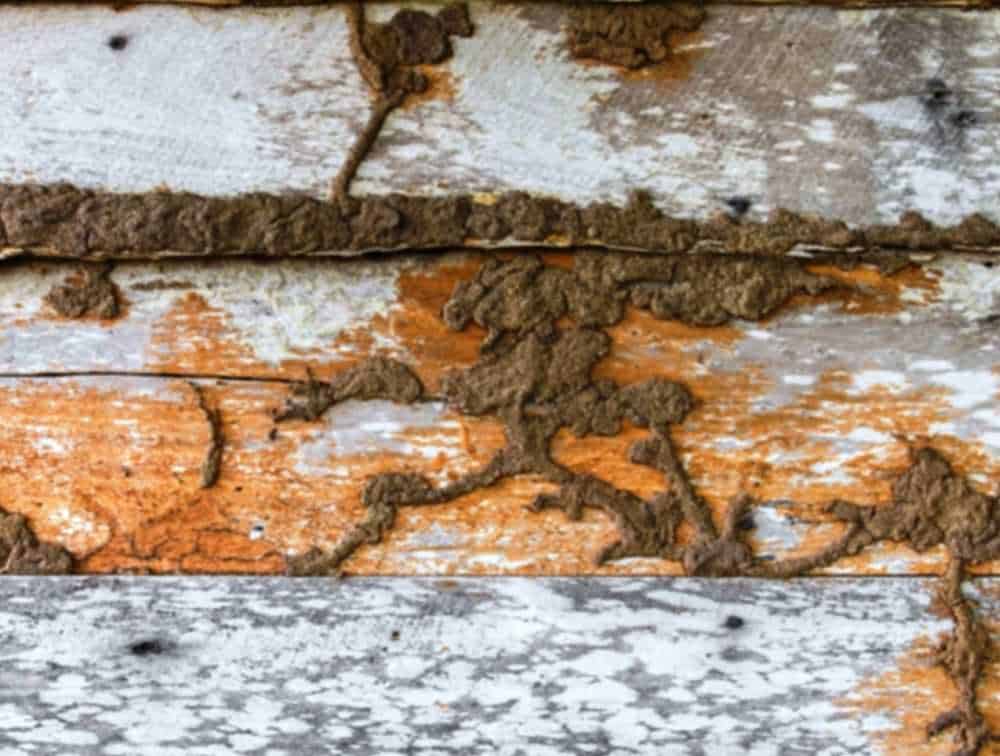
The nests of this type of termite can appear one of two ways. Certain species build low mounds peppered with holes, whereas others create tall tower-like hills. Unlike the other species, subterranean termite feces are liquid. The termites use their droppings as a plaster for nest construction.
How Do Termites Use Fecal Matter?
For certain termites, frass is not only waste. This is the case for dampwood and subterranean termites. Drywood termites are the exception to the rule as their frass goes unused most of the time.
In termite societies, there are three main castes, or, classes. These include the workers, the reproductives, and the soldiers. Workers and reproductives use droppings for various purposes. Mixed with other debris, the droppings help to support and smooth out tunnels.
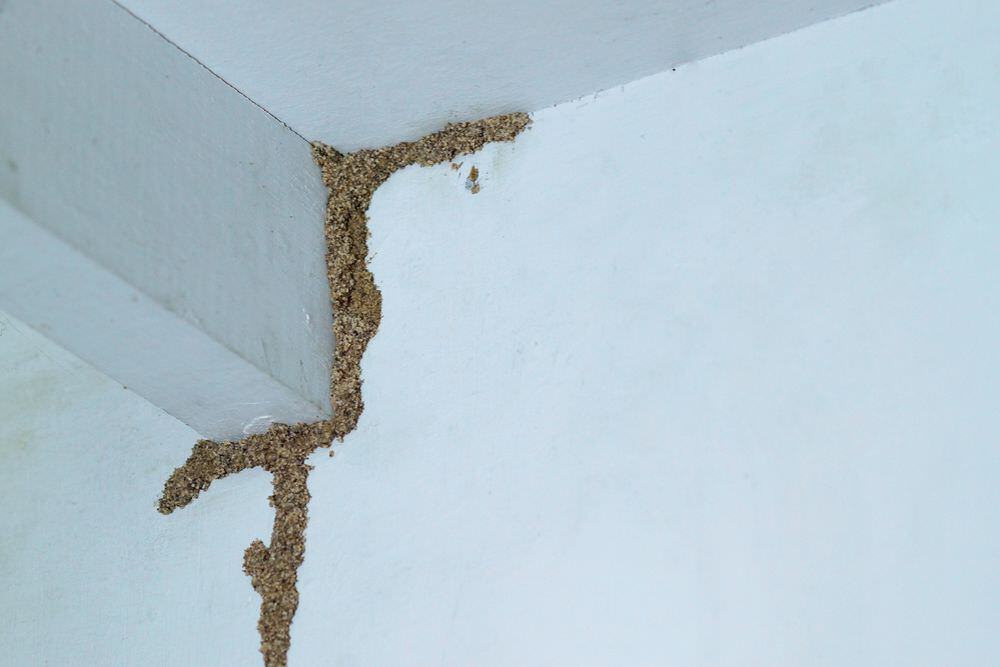
The workers of these species also make use of their droppings to create partitions in the nest. Saliva, chewed wood and feces are brought together to build sturdy nests.
Mature termite colonies produce alates, which are future kings and queens. They leave the original colony to mate and build their own nests. Few alates will survive this departure and find a suitable location. The ones that do so will construct a royal chamber which is then sealed with fecal matter.
Termites can also use their droppings to communicate with their neighbors. They do this by leaving a trail of frass between the nest and found food sources.
Where Do You Normally Find Termite Droppings?
As with appearance, the location of termite frass can vary. The area you discover droppings can also help you identify the type of termite that produced them.
You are unlikely to see the feces of the subterranean termite species. Since their excrement is liquid, it is almost always recycled as building material.
Dampwood termite feces can be seen inside the nest galleries. The galleries are tunnels and chambers the worker termites bore into the infested wood. If these are exposed, you will likely notice brown clumps of excrement.
For drywoods, the frass of these termites is found near small holes. If you spot a pile of termite feces, which resembles black sawdust, examine the structure it has appeared next to. You may discover multiple holes, which have been made by drywood termites specifically to remove excrement from their nest.
Does Finding Frass Mean You Have a Termite Problem?
Unfortunately, a pile of termite pellets can indicate the presence of drywood termites. If you find termite frass near decaying wood structures, you may have dampwood termites. However, there are other signs of a termite infestation to look out for.
Termites are discrete pests, so it can take months or even years before you are aware of an infestation. If you are unable to identify frass, begin checking for the following signs. Otherwise, these insects can leave behind severe, and costly, damage if left to their own devices; especially if you find termites in the house.
Alate Swarms
Only mature termite colonies produce reproductive alates, or swarmers. As I covered earlier, the alates are potential new colony founders that will swarm during certain periods of the year. If you have an advanced termite infestation, you will likely spot them at some point. Swarmers have wings, so will emerge from the nest and fly around in an attempt to establish a new colony.
In your home, this manifests as a swarm of insects that appear from seemingly nowhere. The majority of these alates will die by windows, unable to get out of your house. If the alates successfully establish a new home, they will shed their wings before mating and reproducing. You may find discarded wings, indicating a new colony nearby.
Damaged Wood
Damaged wood is one of the hallmarks of a potential termite infestation. You may notice that wooden walls or other structures have started to blister. The wood can also darken or begin to warp.
You can check for termites by tapping on the affected parts of the wood. If termite tunnels are the cause, you will hear a hollow noise. If the wood is worn away by many tunnels, it may break open.
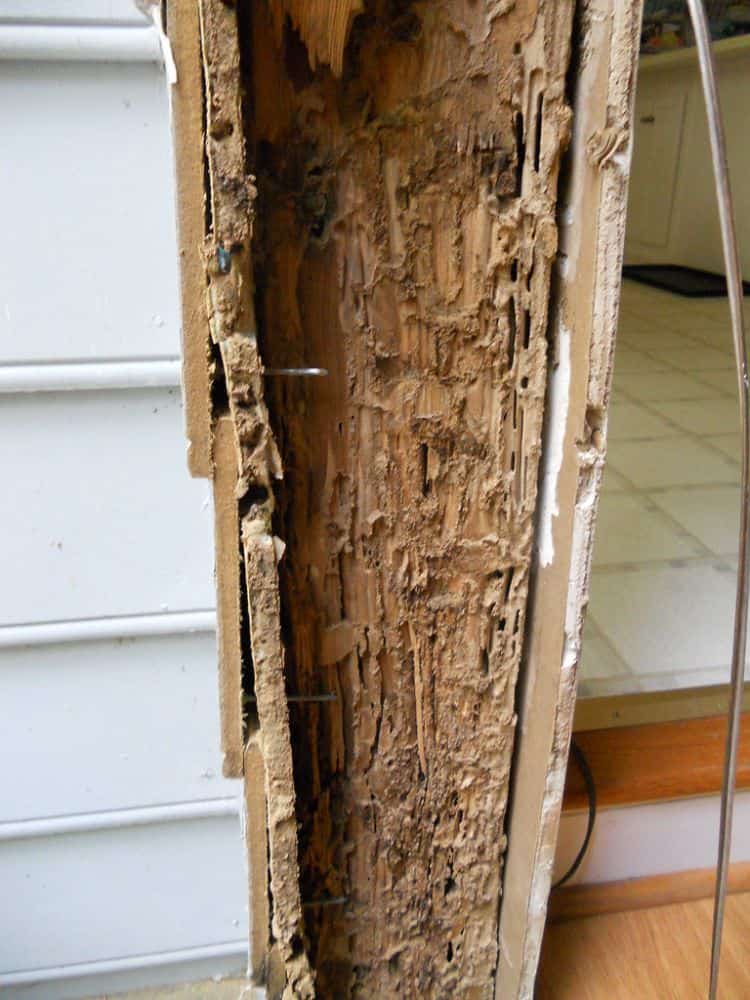
You can also attempt to deliberately puncture disfigured wood with a sharp object and this will allow you to see if there is evidence of termites inside. If there is an infestation, you will see termite tunnels. You may even see worker termites or soldiers actively wandering around.
Getting Professional Help
Termite infestations usually require professional help, especially if they are inside your home. If you suspect a termite infestation, contact a pest control expert immediately.
Do not dispose of potential termite evidence and make sure to keep any corpses or feces you may find, to show to your exterminator. If this is unappealing to you, take clear photos before you throw anything away. Professionals use a range of methods to identify a termite infestation. Depending on your exterminator, he or she may use one or more of the following options.
Trained dogs can sniff out the presence of termites in your home. Other pest control professionals use stethoscopes to listen for termites in the walls. Moisture meters can help determine if the wood is wet enough to be a suitable habitat for termites.
Lastly, microwave and acoustic detectors are specialized gadgets that can be used to detect termites living in your home, using sound waves.
Termite infestations are not always large. Sometimes, the infestation is confined to one location. In this case, it can be dealt with rapidly before it spreads. In other situations, the infestation may have spread to different areas. A professional will be able to recommend the best plan for your individual infestation.
Scoop the Poop – Clean Away the Frass
Termite droppings that have accumulated in accessible areas can be collected by simply sweeping or vacuuming them. Generally, you will only find drywood feces in this way. Subterranean termite droppings are used to build structures inside walls or floors, so they will be removed during treatment or repairs.
Termite feces are not toxic, although some humans may have an allergic reaction to them, similar to an asthma attack.
Take precautions if you have not yet confirmed an infestation. Note the location of the feces and keep a sample if possible, or take photographs. This will help a pest control expert to identify the type of termite responsible for the mess.
Summary
If you notice any signs of a termite infestation, do not ignore it. Termite droppings are one of the clear signals of termite presence in a structure.
Although termite poop can be unsightly, it is not dangerous in itself. Unlike other pests, termites cannot transmit diseases to humans. Conversely, termites can cause significant damage to wooden structures in your home, so the presence of termite poop must be taken seriously.

